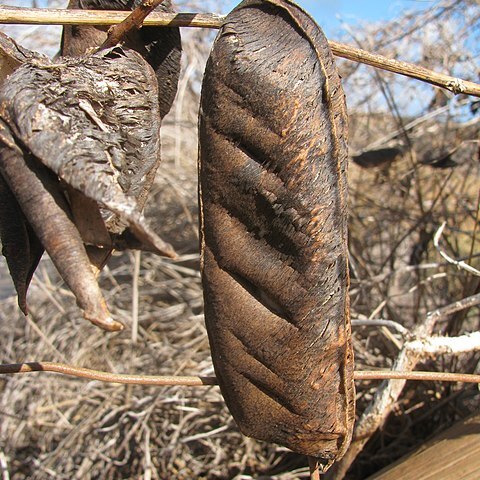Herbs, biennial, robust, twining. Stems and branches sparsely pubescent. Leaflets ovate, 6-10 × 4-9 cm, sparsely white pubescent on both surfaces, base broadly cuneate, truncate, or rounded, apex acute or rounded. Racemes with 1-3 flowers at each node of rachis. Calyx ca. 12 mm, pubescent, upper lip with rounded lobes, shorter than tube, lower lip with 3 teeth. Corolla pink or purplish, 2-2.5 cm; standard orbicular, ca. 2 × 2.5 cm, with 2 thickenings near base, clawed, apex emarginate; wings and keel curved, ca. 2 cm. Legumes oblong, 7-9 × 3.5-4.5 cm, turgid, apex rostrate. Seeds brownish black, elliptic, ca. 18 × 12 mm, hard and smooth; hilum 10-14 mm. Fl. and fr. Apr-Oct.
More
A climbing herb. The vine is less than 2 cm across. The leaves are compound and alternate. The leaves have 3 leaflets. The leaflets are 4-24 cm long by 3-12 cm wide. The veins are easy to see on the upper surface. The leaf stalk is 2-12 cm long. The flowers are lilac. They occur in the axils of leaves. The fruit is a pod. It is often curved. It is 8-12.5 cm long by 3-4.5 cm wide. There are 3-5 ribs along one side. There are 2-6 seeds. They are dark reddish-brown and 18 mm long.
Found mainly in coastal habitats, sometimes on beaches intermingled with Canavalia maritima, but more commonly behind the beach in coastal thickets and coconut groves. It is occasionally found inland at elevations up to 250 metres.
More
A tropical plant. In Nepal it grows from 1000-1400 m altitude. In tropical Australia it grows from 20-200 m altitude.

